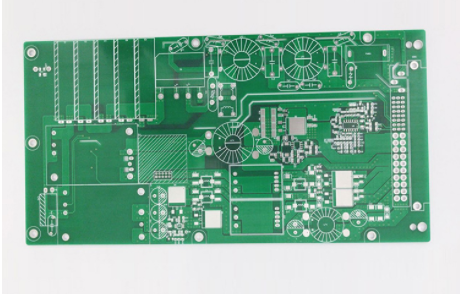PCB board is composed of many components, PCB design needs to select pin type for the components. This article mainly introduces how to choose the pin type.
Common pin types in PCB design
In PCB designs that need to interface with external mechanisms, you need to consider pins and sockets. PCB design involves multiple pins, directly or indirectly.

Browsing through manufacturers' extensive catalogs, you'll find that pin types generally fall into the following categories:
1, single/double row needle
2. Turret slotted pin
3. PCB pin welding
4, winding terminal pin
5. Welding cup terminal pin
6. Slotted terminal pin
7. Wiring terminal pin
Most of these pins are paired with their sockets and are made of different materials. The common materials used to produce these pins are beryllium copper, beryllium nickel, brass alloy, phosphor bronze and tellurium copper. Pins are plated with different finish materials such as copper, lead, tin, silver, gold and nickel.
Some pins are welded or pressed to the wire, but the pins (such as plugs, solder mounts, press fit and turret samples) are mounted on the PCB.
How to choose the right pin type for PCB design
Choosing PCB pins requires far less consideration than other electronic components. Supervision of mechanical or electrical details can lead to functional problems in prototyping or manufacturing PCBS.
When choosing PCB pins, you need to consider the following aspects.
Type 1.
Obviously, you need to determine which PCB pin type is appropriate for your design. If you are looking for terminal pins for board-to-board connections, row pins are the right choice. Row pins are usually through-hole mounted, but there are also surface-mounted versions that are ideal for automatic assembly.
In recent years, solderless technology has provided more options for PCB pins. Pressure distribution is ideal for eliminating welding. They are designed to fit padded PCB holes and provide safe mechanical and electrical continuity. Single line needle for board to board and line to board.
2. Pitch
Some PCB pins provide various sizes of pitch. For example, double blouses are usually available at 2.54mm, 2mm, and 1.27mm. In addition to pitch size, pins vary in size and current rating.
3. The material
The material used to electroplate the pins may result in cost and conductivity differences. Gold-plated pins are usually more expensive than tin-plated pins, but are more conductive.
PCB design with various types of pins
As with any other PCB component, there are a few tricks to keep you from getting annoyed when using terminal pins and connector designs. One of the important rules is to size the fill hole correctly. Always refer to the correct size footprint as recommended by the manufacturer. Filling holes that are too small or too large may cause assembly problems.
The electrical characteristics of the terminal pins are also important, especially when there is a large current passing through. You need to allocate a sufficient number of pins to ensure that the electrical flow required is excessive without causing heat problems.
Mechanical clearance and placement are important for packaged PCB connector pins.
Using plug pins for board-to-board connections can be tricky. In addition to proper alignment, you must ensure that no high-profile components such as electrolytic caps block the gap between the two PCBS. The same is true for package pins that go beyond the edge of the PCB.
If a through-hole or surface-mounted pin is used, make sure that thermal relief is applied to the ground polygon attached to the pin. This ensures that the heat applied during the welding process does not dissipate quickly and subsequently affect the solder joint.